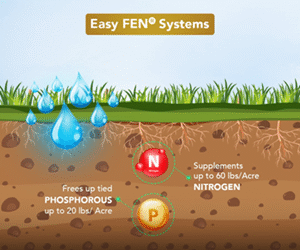Critical minerals reshoring has become a pivotal strategy as nations confront the pressing need to secure essential resources for their technological and industrial economies. With China’s dominance over the production of rare earth elements and other vital minerals raising alarms, countries are scrambling to reclaim their supply chains and fortify their capabilities. This shift towards reshoring critical minerals is not just about reducing reliance on foreign sources; it’s about ensuring national security and economic sovereignty amid escalating trade tensions. As the United States, alongside allies, seeks to rejuvenate its North American minerals supply, companies are stepping up to lead initiatives in graphite production and beyond. The urgency to reshore critical minerals has never been more apparent, as industries realize that these resources are central to everything from smartphones to electric vehicles.
The movement to bring back the production of essential minerals, often described as critical minerals mobilization, is gaining momentum globally. With a focus on reducing dependency on foreign powers like China, stakeholders are exploring homegrown alternatives for sourcing rare earth materials and supporting pivotal sectors. The strategy involves tapping into North America’s inherent mineral wealth, paving the way for a new era of sustainable and resilient production. As global concerns regarding supply chain vulnerabilities grow, the push to enhance local capabilities in areas like graphite and other rare minerals is crucial. This transformation not only supports economic stability but also empowers nations to secure their technological futures against external pressures.
The Urgent Need to Reshore Critical Minerals Production
The recent escalation in tariff wars has brought to light the urgent necessity to reshore critical minerals production in North America. With China holding an overwhelming percentage of the global market for rare earth elements, the U.S. and its allies face significant risks that come from this over-dependence. Historical events have illustrated that such monopolies not only impact supply chains but can also threaten national security. By increasing domestic production and reshoring critical minerals, the United States can build a resilient supply chain that mitigates these risks, focusing on self-sufficiency and strategic independence.
Reshoring critical minerals is not merely an economic strategy, but also a geopolitical response to the increasing trade tensions with China. The U.S. is realizing that important sectors such as technology, defense, and renewable energy can be severely impacted by disruptions in the availability of these essential minerals. Government initiatives are underway to ensure that enough resources are available on domestic soil to support industries that rely heavily on rare earth metals and other critical elements.
North American Minerals Supply: A Sustainable Future
The push for a robust North American minerals supply is gaining momentum, especially as industries pivot toward sustainability and climate consciousness. Companies like Nouveau Monde Graphite are leading efforts to develop mining operations that not only prioritize critical mineral extraction but also advocate for environmental responsibility. By leveraging new technologies and greener practices, these companies significantly reduce their environmental footprints and present a model for sustainable mining that could redefine the sector.
Furthermore, a bolstered North American minerals supply can pave the way for enhanced collaboration among U.S. and Canadian miners, fostering innovation and sharing best practices. Establishing a secure domestic supply chain will enhance economic stability while addressing ethical sourcing concerns associated with overseas mining operations, particularly within areas dominated by China. As the demand for electric vehicles and renewable energy technologies grows, the importance of local sourcing of these minerals becomes even more pronounced.
Rare Earth Elements: The Key to Modern Technology and Defense
Rare earth elements (REEs) are at the forefront of modern technology, playing a pivotal role in the production of high-tech devices ranging from smartphones to military hardware. The ever-increasing reliance on these minerals underscores their critical nature to national defense and consumer electronics alike. However, the current dominance of China in REEs poses a significant threat to U.S. technological advancement and security, especially as the geopolitical landscape becomes more volatile.
To combat this challenge, U.S. policymakers and companies are actively exploring ways to source and process rare earth elements domestically. This includes initiatives to revitalize existing mines, as well as investments in research and development for alternative technologies that reduce reliance on REEs. By establishing a domestic supply chain for rare earths, the U.S. can not only secure its technological independence but also stimulate job creation and economic growth in the minerals sector.
The Threat of China’s Minerals Dominance
China’s Minerals dominance is an increasingly concerning reality that is prompting a strategic reassessment worldwide. As trade relations deteriorate and export controls tighten, countries heavily dependent on Chinese minerals find themselves in precarious positions. The near-monopoly China holds over many key materials, particularly in the realm of critical minerals, creates vulnerabilities that undermines global supply chains and poses risks to economic stability.
In response to this challenge, nations are turning toward reshoring initiatives, recalibrating their mineral acquisition strategies to ensure self-sufficiency. This transition involves not only the exploration of domestic resources but also the embrace of recycling technologies and international partnerships to diversify supply sources. The focus on breaking China’s stranglehold on critical minerals is vital for preserving national security and promoting sustainable economic practices on a global scale.
Graphite Production: A Key Component for Electric Vehicles
Graphite production has become a focal point in the electric vehicle (EV) market, serving as a crucial component in lithium-ion batteries. As demand for electric vehicles surges, particularly in North America, the need for a reliable and stable source of graphite is paramount. With China currently controlling a substantial portion of the global graphite supply, North American companies like Nouveau Monde Graphite are stepping up to fill the gaps, ensuring that the growing EV market does not succumb to external pressures and supply shortages.
By investing in local graphite mining initiatives, North America can establish itself as a leader in sustainable battery production. Companies are increasingly focused on creating environmentally responsible processes for graphite extraction, addressing both economic and ecological concerns. This commitment not only supports the domestic EV industry but also contributes positively to the broader goals of environmental sustainability and energy independence.
Strategic Investments in Critical Minerals
The recent surge in strategic investments in critical minerals underscores a broader acknowledgment of their pivotal role in supporting national interests. With the U.S. government taking proactive steps involving financial stakes in various companies, including critical minerals producers, there is a clear push toward fortifying domestic supply chains. This approach aims at ensuring that essential minerals are readily available for technological advancements and defense applications without relying excessively on foreign sources.
Moreover, major investments from financial giants such as JPMorgan Chase further indicate the private sector’s recognition of the importance of a robust critical minerals supply. These investments can stimulate innovation, enhance production efficiencies, and ultimately lead to the establishment of a sustainable ecosystem that supports both economic growth and national security. By fostering collaborations between the government and industry, a secure and diversified minerals supply chain can be realized.
The Role of Government in Securing Mineral Resources
The government’s role in securing mineral resources has become increasingly vital in the wake of international tensions and supply chain vulnerabilities. The U.S. administration has initiated measures to identify and support the domestic production of critical minerals, with an emphasis on those essential for national security and technological independence. This effort is reflected in targeted investments and policy frameworks designed to promote exploration and mining activities within American borders.
Additionally, the government is actively collaborating with private entities to catalyze investments in critical minerals sectors. By establishing clear regulations and incentives, authorities can ensure a balanced approach that not only protects the environment but also encourages sustainable practices among mining companies. The strategic focus on the domestic production of critical minerals, as driven by governmental initiatives, is integral to reshaping the landscape of resource availability in the face of global challenges.
Local Enterprises Championing Mineral Sustainability
Local enterprises are increasingly recognized as champions of sustainability in the critical minerals sector. Companies such as Nouveau Monde Graphite are not only focusing on efficient mineral extraction but also adopting environmentally friendly practices that mitigate impacts on surrounding ecosystems. By prioritizing carbon-neutral operations and optimizing resource use, these businesses serve as models for the future of mining, blending economic gain with ecological stewardship.
Moreover, fostering local enterprises is pivotal for economic resilience and job creation within communities. As demand for critical minerals escalates, the growth of local companies ensures that economic benefits are retained within the region while encouraging technological advancements. Support for local mining ventures aligns with broader sustainability goals and reinforces the importance of resilient supply chains in an ever-evolving global market.
The Future of Critical Minerals: Trends and Predictions
Looking ahead, the future of critical minerals appears marked by significant transformations driven by innovation and shifting market dynamics. As countries around the globe prioritize secure and sustainable sources of these essential resources, trends indicate a growing emphasis on reshoring and localized production. The drive towards electrification and renewable energy further magnifies the necessity for a reliable supply of critical minerals, pushing industries to explore new frontiers in resource development and processing.
Predictively, this transition will catalyze the New North American minerals industry, leading to breakthroughs not only in production but also in recycling technologies that can offset reliance on mined resources. As more companies invest in environmentally responsible practices and form partnerships to enhance supply chain resilience, the landscape of critical minerals will evolve, ensuring that the demands of tomorrow’s market are met with sustainability and responsibility at the forefront.
Frequently Asked Questions
What is the significance of reshoring critical minerals production in North America?
Reshoring critical minerals production in North America is vital for reducing dependency on foreign sources, particularly China, which dominates the market. This shift aims to strengthen national security, ensure stable supply chains, and boost local economies by investing in domestic mining efforts.
How does China’s dominance in rare earth elements impact critical minerals reshoring efforts?
China’s dominance in rare earth elements poses significant challenges to critical minerals reshoring efforts, as it leads to supply chain vulnerabilities and geopolitical tensions. The U.S. and its allies are thus motivated to develop their own sources of these vital minerals to safeguard technology sectors and maintain economic stability.
What role do rare earth elements play in the context of critical minerals reshoring?
Rare earth elements are essential for the production of high-tech devices and renewable energy technologies, making them a focal point in critical minerals reshoring efforts. By cultivating domestic production, countries can mitigate reliance on China and enhance their technological sovereignty.
Why is graphite production a key focus in critical minerals reshoring initiatives?
Graphite production is crucial in critical minerals reshoring as it is a primary component in lithium-ion batteries used in electric vehicles and renewable energy systems. Establishing domestic graphite sources helps reduce dependence on Chinese imports and supports the transition to a greener economy.
What are the implications of the tariff wars on the North American minerals supply?
The tariff wars have highlighted the necessity for North American minerals supply resilience. By investing in domestic critical minerals production, countries can protect themselves from trade conflicts and establish a more secure and sustainable supply chain for essential materials.
How are investments from Wall Street impacting critical minerals reshoring efforts?
Wall Street investments are significantly enhancing critical minerals reshoring efforts by providing necessary capital for domestic mining projects and related industries. These investments foster innovation, boost production capabilities, and decrease reliance on foreign sources.
What steps are being taken to reduce reliance on China’s critical minerals?
To reduce reliance on China’s critical minerals, the U.S. and its allies are initiating policies aimed at increasing domestic production, investing in local mining ventures, and establishing partnerships with friendly nations to diversify the supply chain.
How does Nouveau Monde Graphite contribute to reshoring critical minerals in North America?
Nouveau Monde Graphite is pioneering critical minerals reshoring in North America by positioning itself as a leading producer of carbon-neutral graphite. Its operations are designed to meet the growing demand for sustainable energy solutions while providing a reliable alternative to Chinese graphite.
What future trends can we expect in the critical minerals reshoring landscape?
Future trends in critical minerals reshoring may include heightened investment in domestic mining technologies, increased collaborations between governments and private sectors, and an emphasis on sustainable production methods to ensure environmental compliance and resource availability.
| Key Point | Details |
|---|---|
| China’s Dominance | China dominates the production of rare earths and critical minerals, raising concerns over dependency. |
| Export Restrictions | China has imposed new export restrictions on rare earths, requiring special approvals, affecting various industries. |
| U.S. Response | The U.S. is considering tariffs on Chinese goods and pursuing its own mineral projects to reduce reliance. |
| Investment Surge | The Pentagon plans to allocate nearly $1 billion for strategic materials and companies are receiving support from the government. |
| JPMorgan’s Investment Plan | JPMorgan Chase announced a $1.5 trillion investment in industries critical to national security over the next decade. |
| Nouveau Monde Graphite | Nouveau Monde Graphite is set to become North America’s first carbon-neutral graphite producer, aiming to reduce dependency on Chinese graphite. |
Summary
Critical minerals reshoring is now essential for the United States to mitigate its reliance on foreign sources, particularly China, for these vital commodities. Recent geopolitical tensions and export restrictions have intensified this push, sparking significant investments from both the government and private sectors aimed at developing a robust domestic supply chain. Companies like Nouveau Monde Graphite are emerging as key players in this movement towards self-sufficiency, ensuring that America’s critical mineral needs are met sustainably and securely.












